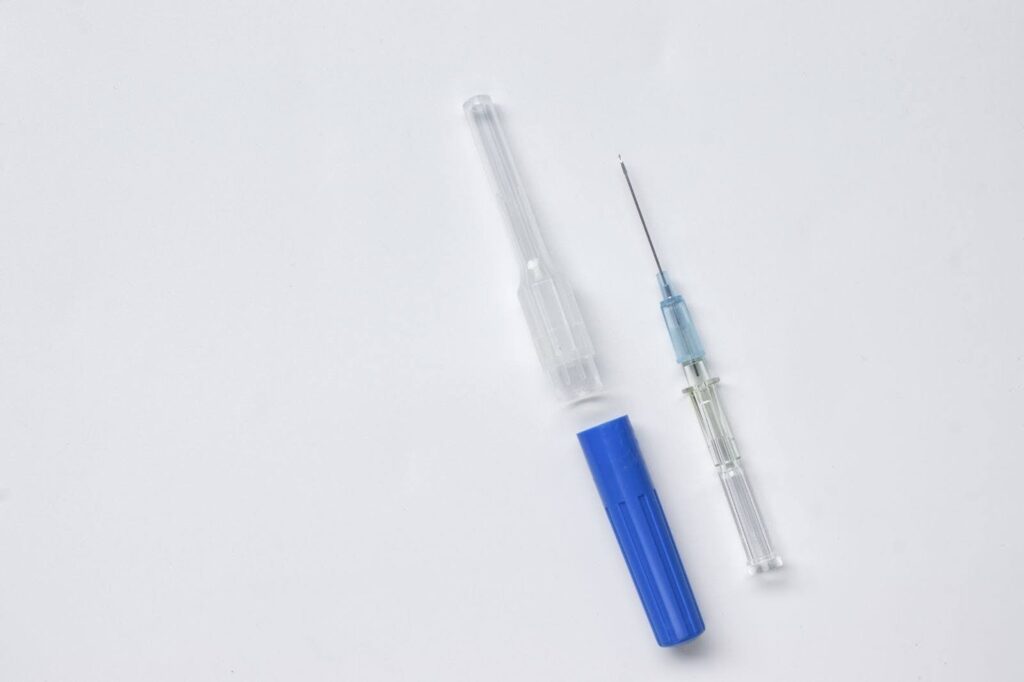Intravenous therapy (IV) is a fundamental component of modern medicine. It involves administering fluids and medication directly into a patient’s vein. So, understanding the common IV insertion sites is crucial to perform an efficient and safe delivery. However, patients may also benefit from such insight.
It’s important to recognize that each of the different sites comes with unique advantages and considerations. We will provide a comprehensive overview of the key locations, helping professionals make informed decisions and offering patients a clearer understanding of the IV administration process.

Source: shutterstock.com / Photo Contributor: Sirbouman
Common IV Insertion Sites
As every professional nurse for IV therapy in Queen Creek might tell you, there are multiple IV insertion sites, each with a specific use. Many might be surprised to learn that the arm is not the only place suitable for IV administration.
An intravenous cannula can be inserted in different places on the body based on individual factors and situations. Here are the most common types of IV sites:
Accessory cephalic vein
The accessory cephalic vein is one of the most well-known IV injection sites. This branch comes from the cephalic vein and runs through the arm and shoulder. The insertion site is found on the inner side of the arm just below the elbow. This vein typically holds up to 18 or 20 gauge.
The accessory cephalic vein is easiest to locate when the patient’s arm hangs freely by their side. As experienced nurses will tell you, when inserting an IV through this vein, it is best to go a bit below the bend of the arm to spare the patient from potential discomfort.
Forearm
Another common IV site is the inside of the forearm. The reason behind its popularity is the optimal place of the antebrachial vein through which the IV is administered.
Patients with IV in their forearms are free to move their arms without any pain or associated danger. No nerves are located near this insertion site, which makes it an optimal choice in most scenarios.
However, the antebrachial vein is not particularly large and cannot handle gauge sizes larger than 22. It can also be difficult, if not impossible, to access this vein in patients who have a bigger amount of subcutaneous fat. The vein is located deeper in these patients and tends to roll easily.
Hand
The dorsal venous network or dorsal arch veins make the largest veins on the hand and are usually the easiest to spot. They are located at the back (top) of the hand and make an optimal choice when inserting an IV in the hand, as infiltration is easiest to notice.
The only potential downside when inserting IVs through the dorsal veins is that they may easily roll off if not stabilized properly. This is why patients are usually advised to make a light fist, which will prevent the veins from moving.
Foot
While any large enough vein in the foot may be used for IV if necessary, the dorsal arch veins are usually the preferred option. Although smaller in size, these veins are easy to access.
The great saphenous vein is another popular IV site in the foot. This vein runs anteriorly to the medial malleolus (the bony bump on the inner side of the ankle) and is not always clearly visible.
However, once spotted, it is easy to access and lasts well. The saphenous vein is readily used when inserting central venous catheters in adults, but it’s avoided in infants.

Source: shutterstock.com / Photo Contributor: Sirbouman
Complications Associated With IV Insertion
There are some possible complications linked to administration IV. We will discuss these complications and offer advice on how to prevent them.
Infiltration
Infiltration is usually a direct result of improper IV placement, but it can also happen due to patient movement. It occurs when IV fluids leak outside the intravascular space. Some common signs of infiltration include swelling, a feeling of burning or tightness in the surrounding area, a decreased flow rate, and more.
When this happens, immediate action is needed, and the IV must be immediately removed. One way to prevent infiltration is by choosing a suitable IV insertion site. Proper techniques and regularly checking up on the patient are also good practices.
Phlebitis
Phlebitis is inflammation of the vein. It can happen due to vein trauma during IV insertion or as a result of the alkaline or acidic PH of the IV solution. Phlebitis is more frequent when using an angiocath.
This is why metal needles are considered a safer option when administering IV. Older patients have also been found to be more susceptible to this condition. Phlebitis treatment usually involves a warm compress on the site and introducing non-steroidal medication.
Hematoma
Hematoma happens when blood leaks from the vein into the surrounding tissue. Hematoma may happen when pressure is not properly applied while removing the vessel. It may also occur if, during catheter insertion, the needle punctures through the vein.
Usually, hematoma results in increased area tenderness, and patients might also feel a hard, raised area under the skin. The easiest way to gain control in such situations is by applying direct pressure on the spot.
Thrombosis
Thrombosis happens when a blood clot causes a vein to become swollen or inflamed. Some commonly associated symptoms might include pain along the vein and redness and tenderness of the area. Thrombosis may also cause limb pain or, in some cases, vein hardening.
This condition results from vein injury or as a result of certain types of medications. To prevent thrombosis, it is best not to insert the IV in the same place and regularly inspect the insertion area for any swelling or redness.
Steps for IV Insertion Sites
The first step in every IV administration process includes briefly explaining the procedure to the patient. Informing the patient that they might experience a little discomfort and gaining their consent is essential in this practice.
Preparation
During the preparation phase, nurses have to ensure that all the equipment is their exposal. Some typical items on the IV equipment list include gloves, alcohol cleanser and wipe, plaster, IV cannula, saline, and more.
Site selection
The insertion site will mainly depend on the patient’s condition. While the most popular location for IV infusion might be the forearm and the hand, other options are also available. How the infusion is administered mainly depends on the nurses.
Before reaching a final decision there must be a detailed inspection of the patient’s situation. Overall, site location and choosing the appropriate vein are usually based on the type of treatment involved and how long the infusion will last.
Disinfection
Proper hygiene is key in administration IV. Before introducing the IV, nurses have to sanitize their hands and clean the selected skin area. This helps lower the risk of any possible infections.
Securing the IV catheter
Securing the IV catheter is crucial in preventing potential vein trauma. As explained earlier, most of the IV complications arise due to improper IV administration and vein damage caused by needle movement. This is why trained nurses usually place dressing and a sticker to keep the cannula in place.

Source: shutterstock.com / Photo Contributor: Nisitmicrostock
Conclusion
The selection of appropriate IV insertion sites is a critical skill in healthcare, impacting the efficiency and safety of intravenous therapies. Nurses must thoroughly understand the sites to optimize patient care. Equally, patients also benefit from being informed about these procedures.
As explained, while some of the best-known choices include the inner side of the elbow and the hand, IV can also be inserted in areas such as the scalp, foot, and inner thigh. Nurses always follow a set of criteria when inserting IVs, as these may help minimize the risk of infection and other possible complications.




